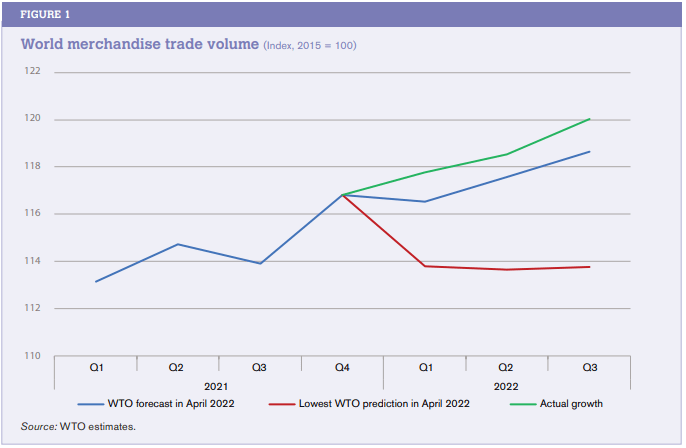World GDP forecasts from the WTO and other organizations were revised downward following the outbreak of war in Ukraine last year.
Below is a WTO summary of global growth and outlook, with international trade performance and the impact of the Ukraine-Russia war.
Shortly before the outbreak of hostilities, the International Monetary Fund (IMF) estimated that world GDP in purchasing power parity would grow 4.4 percent in 2022 and that merchandise trade volume would increase 6.0 percent.

In the absence of new economic data at the start of the conflict, WTO economists used a simulation model to estimate its potential impact.
They estimated that the war would reduce global GDP growth by 0.7 to 1.3 percentage points to between 3.1 and 3.7 percent.
Meanwhile, merchandise trade growth was expected to halve, bringing the WTO’s October 2021 forecast down from 4.7 percent to between 2.4 and 3 percent, with pessimistic scenarios putting trade growth at a minimum of 0.5 percent.
While most of these predictions have materialized to some extent, worst-case scenarios have largely been avoided.
Instead, output and trade have held up remarkably well.
World GDP
The most recent estimates put output growth in the middle of the forecast range, while trade growth exceeded WTO forecasts in April 2022.
The IMF’s October 2022 World Economic Outlook forecast GDP growth of 3.2% in 2022, subsequently revised upward to 3.4% in January 2023.
Its 2023 GDP forecast was revised upward at the same time, from 2.7 to 2.9 percent.
The WTO’s 2022 merchandise trade forecast was also revised upward in October to 3.5 percent, up from 3.0 percent in April.
International trade
Trade performance was better than expected, which can be attributed to several factors, including relatively strong consumer demand as labor markets remained solid in advanced economies.
Also, transportation and supply chain pressures eased in the second half of 2022, as freight rates declined and commodity prices retreated.
Despite these positive signs, trade growth in 2023 is likely to remain sluggish as monetary policy tightening takes effect with long and variable lags.
The WTO’s current forecast of 1.0% merchandise trade growth in 2023 will be revised in April.
![]()

